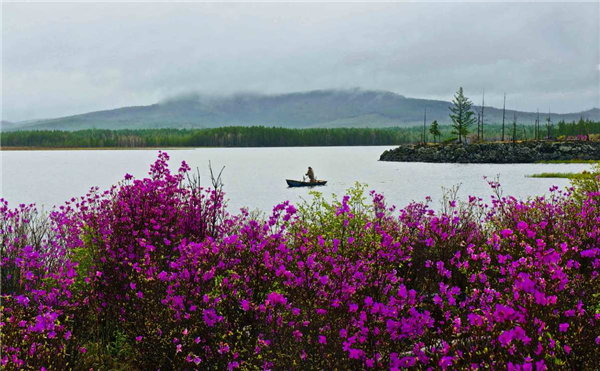Ecological civilization construction makes progress in Inner Mongolia

The use of sand barriers helps transform hundreds of acres in northern China's Kubuqi Desert into green landscape. [Photo provided to chinadaily.com.cn]
North China's Inner Mongolia autonomous region held a press conference on April 27, summarizing the region's ecological civilization achievements last year.
In 2021, days with air quality rated "good" or "excellent" accounted for 89.6 percent of all days.
The region's average concentration of PM2.5 was 23 micrograms per cubic meter, a year-on-year decrease of 17.9 percent, while the proportion of heavily polluted days was 0.2 percent, a year-on-year decrease of 0.9 percentage points.
During the fight against water pollution, a total of 162 sewage outlets to rivers were blocked and 93 river areas were designated drinking water source protection areas.
Meanwhile, the Halaha River was named among the first batch of nine beautiful rivers and lakes in the country by the Ministry of Ecology and the Environment.
Inner Mongolia achieved the safe use of 105,000 mu of arable land and the strict management and control of 12,900 mu of arable land last year, included 139 construction land plots in the priority management and control list, and completed domestic sewage treatment tasks in 300 administrative villages.

The Arxan National Forest Park has become a popular tourist attraction in the Inner Mongolia autonomous region. ZHANG JINHE/FOR CHINA DAILY
Furthermore, the region's Baotou and Ordos cities were designated national groundwater pollution prevention and control pilot areas.
Inner Mongolia has continuously strengthened the supervision of environmental law enforcement and the investigation and punishment of public complaints and reports.
It signed ecological and environmental law enforcement linkage agreements with Heilongjiang, Ningxia and other provinces and autonomous regions in northern China.
It also handled 2,251 administrative penalty cases and closed 134 cases of environmental pollution crimes and 1,806 cases reported by the public.



 Print
Print Mail
Mail


